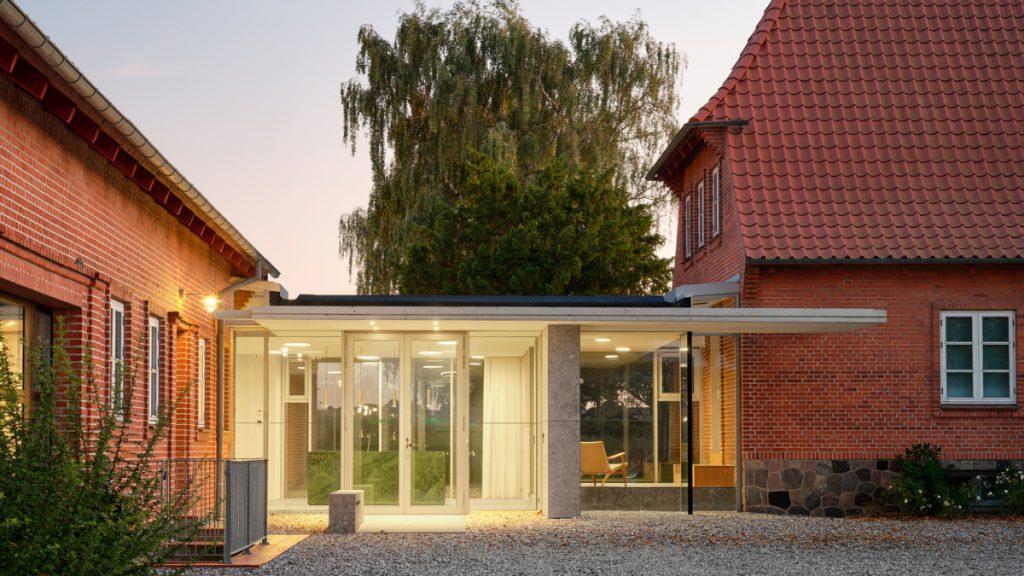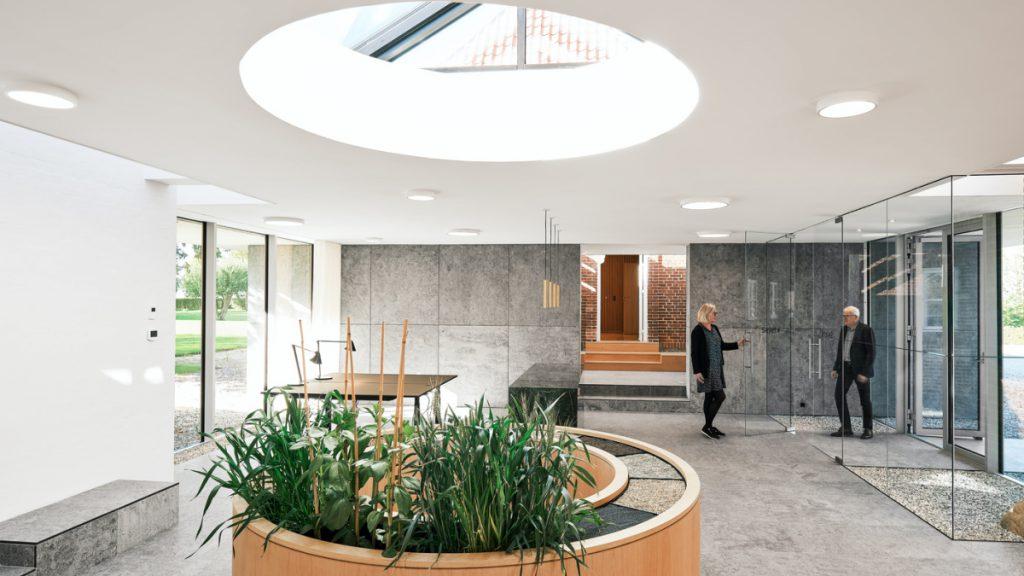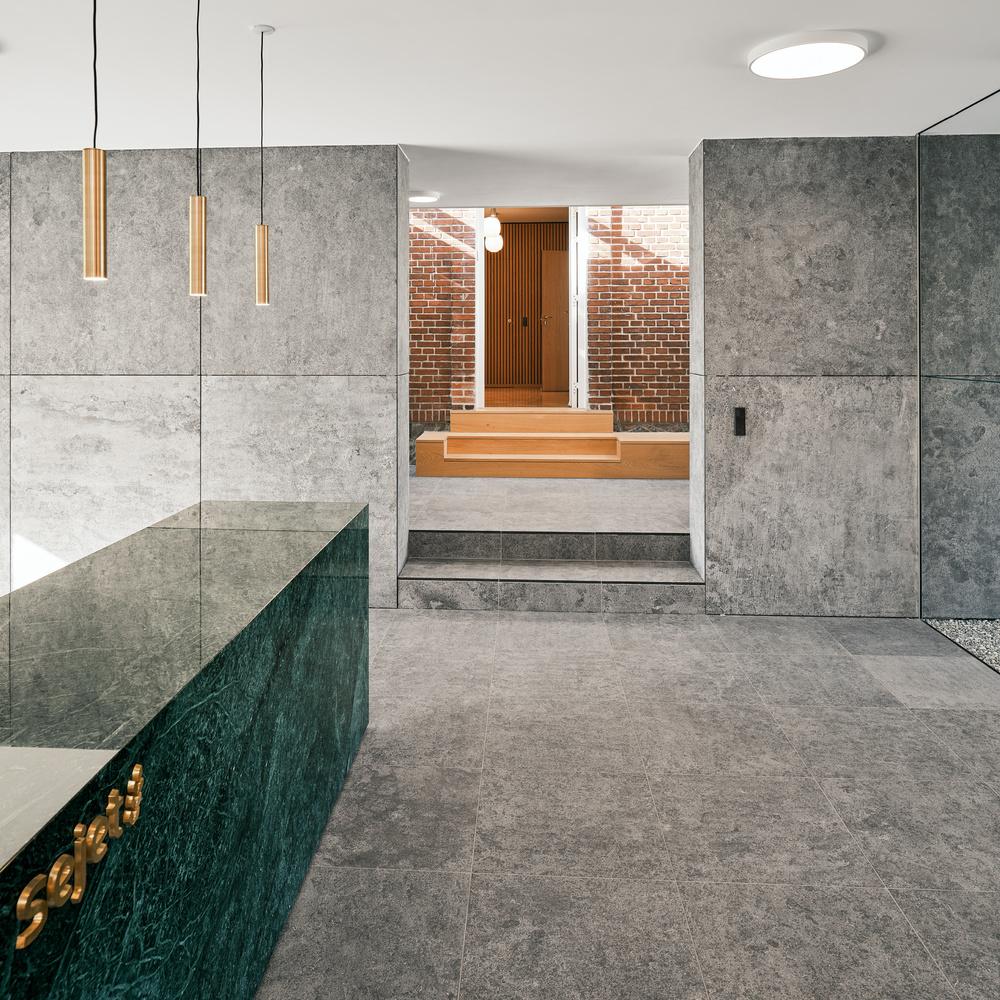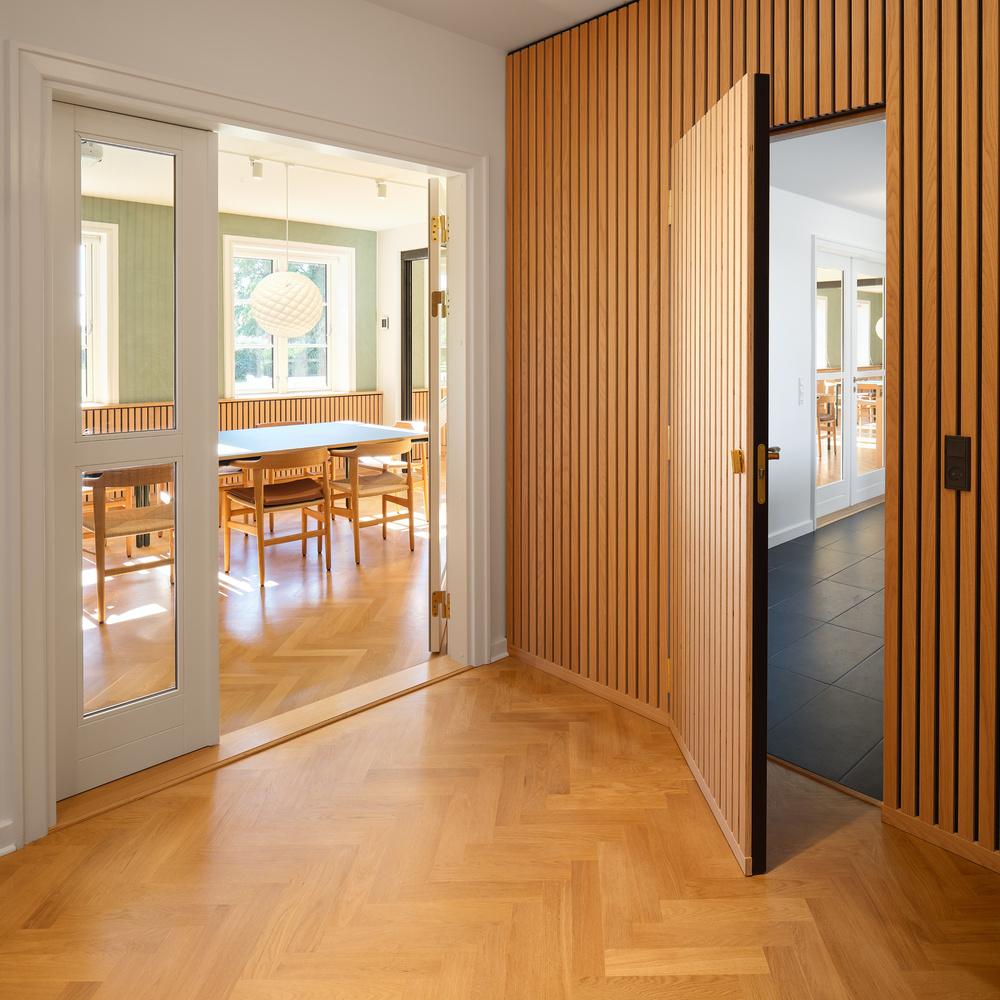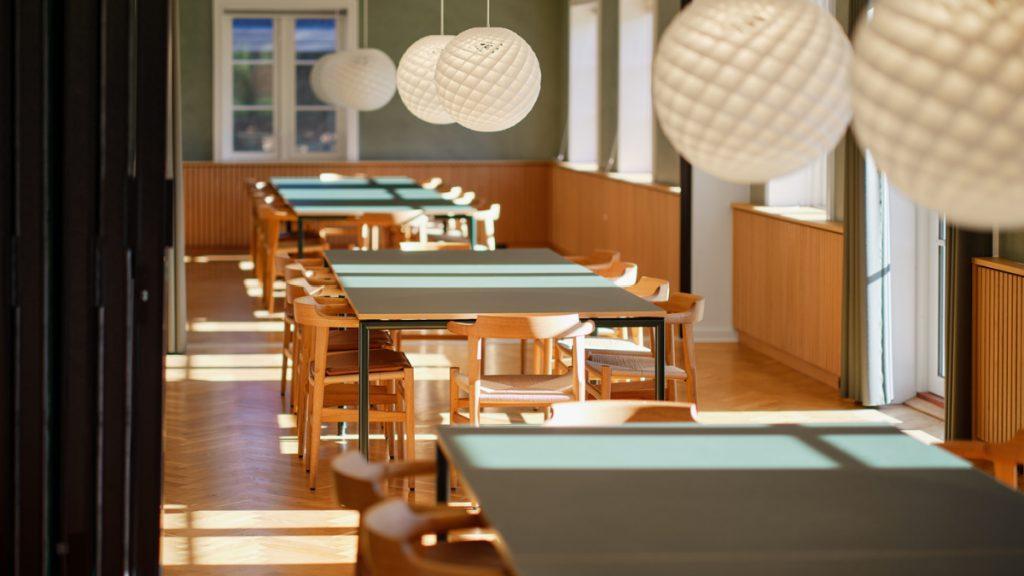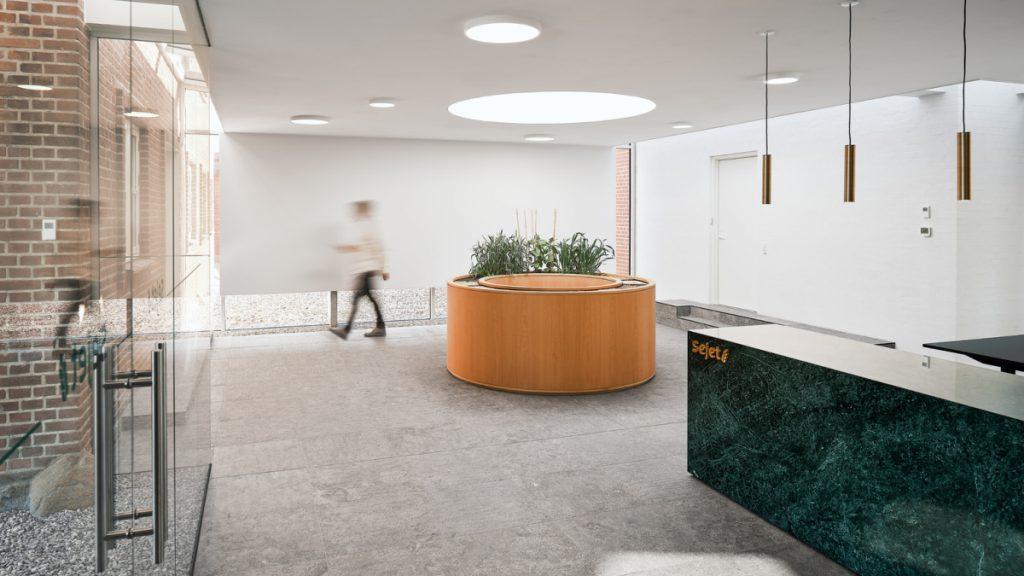Pairing wood and stone in a Danish design
Sejet Plant Breeding in Denmark develops modern grain varieties. The company cultivates plants using state-of-the-art, sustainable technology, and has adopted the same approach for its new entrance building, designed by GinnerupArkitekter.
As many as 12,000 years ago, people began to explore the systematic use of wild plants and subsequent breeding of specific agricultural crops. Fast forward to the modern-day world, obviously with methods that have changed completely, high-tech laboratories have now taken over from fields and meadows as the sector’s contemporary workplace.
Captivating names
One of the companies specializing in varieties of grain that are fit for the future is Sejet Plant Breeding. Cleopatra, Neptun and Medusa are just three of the captivating names given to the varieties developed by this long-standing enterprise. Since 1947 the biotech company has been headquartered in the small town of Sejet in Denmark’s Jutland.
“Experimental farms are considered by many to be a bit old-fashioned,” says Birger Eriksen, CEO of Sejet Plant Breeding. In this case it is definitely a misconception, however, as you only have to take a look at their new stylish entrance area, built onto the grand brick buildings that have housed their operations from the outset, to realize that such a label is entirely unsuitable here.
Sejet Plant Breeding – anything but outdated
Eriksen is delighted with the result: “The new entrance building makes it clear that our company is not just an experimental farm. It is a modern biotech-based business with state-of-the-art laboratories, where we use the latest technologies and develop new genetics at an international level.”
With great respect for the classic courtyard motif, we have designed a straightforward building that carefully binds together the older buildings.
Martin Schack, architect and partner at GinnerupArkitekter
The contemporary entrance area shows great appreciation of the historic buildings and complements their robust expression with a simple, light construction. GinnerupArkitekter was responsible for designing the new structure.
Merging old and new
One of the architects’ primary goals was to find expression for the modern ambitions of Sejet Plant Breeding. “With great respect for the classic courtyard motif, we have designed a straightforward building that carefully binds together the older buildings,” explains Martin Schack, architect and partner at GinnerupArkitekter.
This merging of old and new is achieved exclusively through the use of glass. The new entrance is linked with the existing buildings using large expanses of glass, round skylights and also strips of light made of glass. These numerous transparent areas eliminate any distinction between the interior and the outside landscape.
Elegantly complemented
All these measures present the extension not just as right on trend, but also as elegantly complementing the nature that envelops the premises of this biotech company. The courtyard feeling created by the entrance building is another benefit of the new development.
The courtyard paving is mirrored inside the building, with the beautiful natural stone in a warm shade of grey also used for the flooring, counter and certain wall sections. And the assiduous choice of heavily structured and natural materials generally underlines the identity of the company.
Natural materials
Oak is the second prominent material selected by the architects. For example, the herringbone parquet flooring in the old farmhouse has been preserved. Additionally, new slatted walls and oak panels continue the parquet vertically to highlight the overall effect. In this area of the building, with its meeting and conference facilities, this successfully achieves a fine contrast with the emphasis on stone in the entrance area.
GinnerupArkitekter themselves designed the unpretentious yet extremely stylish tables, which have green linoleum surfaces. The same green colour is also found in the textured paint on the walls.
Danish design in green and gold
The other furnishings use fine materials, and were created by some of the biggest names in the business: lamps by Louis Poulsen, drapes by Kvadrat, Wegner furniture, and water fixtures and handles made of brass designed by Arne Jacobsen for d line. All in all, it is an extremely elegant ensemble – just as you would expect from Denmark, and in line with its status as a design mecca.
Text: Martin Obermayr
Translation: Rosemary Bridger-Lippe
Photos: Ulrik Tofte Olesen
